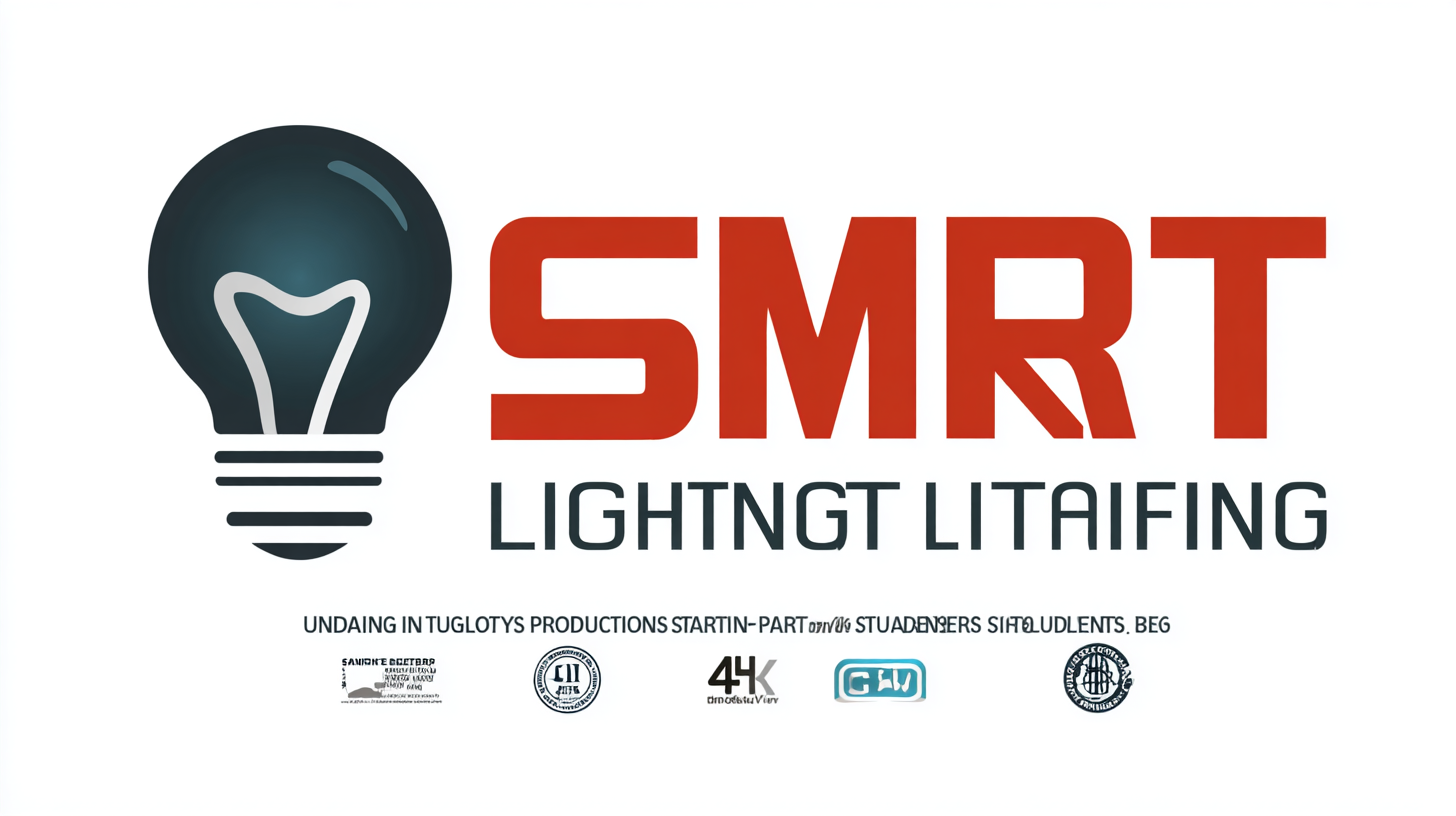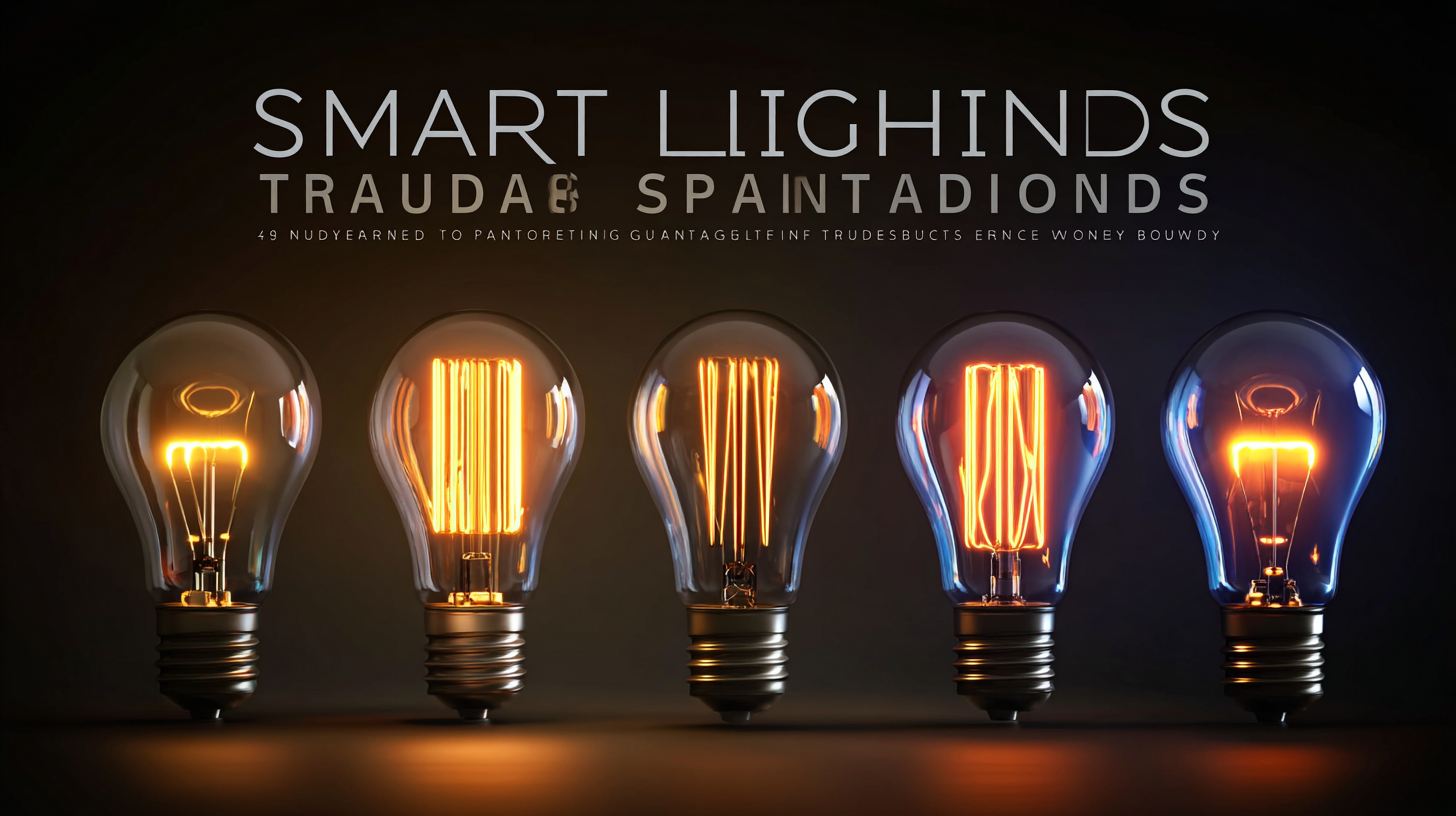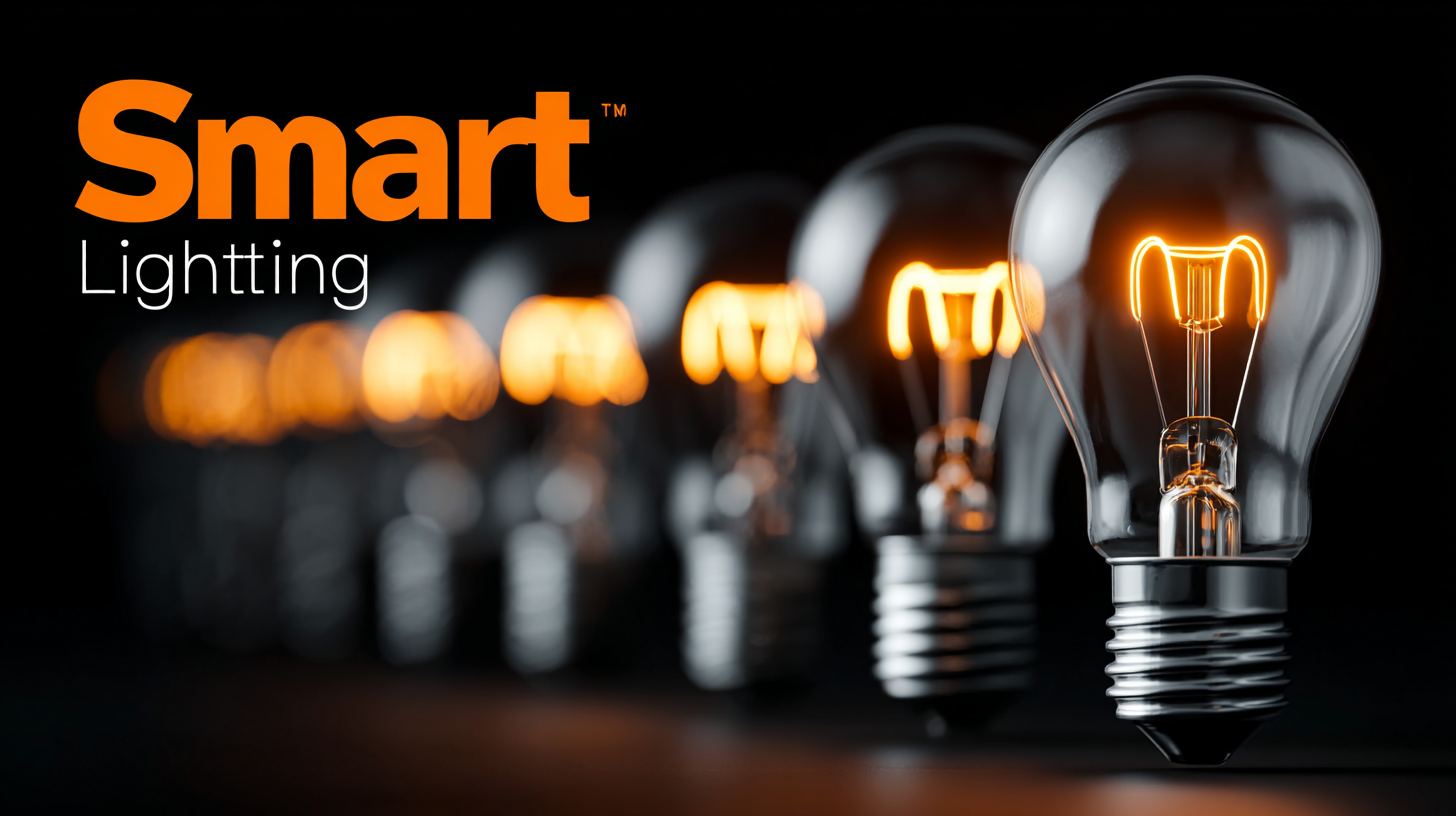
Understanding Industry Production Standards for the Best Smart Lighting: A Comprehensive Guide for Global Buyers
In recent years, the demand for Smart Lighting has surged, driven by advancements in technology and a growing emphasis on energy efficiency. According to a report by MarketsandMarkets, the global smart lighting market is expected to reach $75.5 billion by 2025, growing at a CAGR of 20.4%. This rapid expansion highlights the importance of understanding industry production standards for global buyers seeking to invest in high-quality smart lighting solutions. As more consumers and businesses prioritize sustainability and cost-effectiveness, navigating the various standards and certifications can be daunting. This comprehensive guide aims to equip buyers with the top strategies for understanding and selecting smart lighting products that meet industry benchmarks, ensuring optimal performance and compliance in an increasingly competitive market.

Emerging Technologies Shaping the Future of Smart Lighting by 2025
The landscape of smart lighting is evolving rapidly, driven by emerging technologies set to reshape the industry by 2025. According to a recent report by MarketsandMarkets, the global smart lighting market is projected to grow from $10.4 billion in 2020 to approximately $24.5 billion by 2025, showcasing a compound annual growth rate (CAGR) of 18.0%. This growth is primarily fueled by advancements in IoT, artificial intelligence, and energy-efficient lighting solutions that are transforming how spaces are illuminated and managed.

Key innovations in smart lighting include the integration of human-centric lighting designs and smart sensors. The latest data from Research and Markets highlights that connected lighting systems will play a pivotal role in smart city initiatives, enhancing urban environments by improving energy efficiency and reducing carbon footprints. As cities invest in smart infrastructure, the adoption of automated controls and data analytics will enable real-time adjustments, creating adaptive lighting conditions that promote both safety and well-being. By 2025, these technologies are expected to significantly influence consumer preferences, driving demand for products that not only provide illumination but also enrich the user experience through enhanced connectivity and personalization.
Key Industry Standards and Regulations for Global Buyers of Smart Lighting
As global buyers of smart lighting solutions navigate the rapidly evolving marketplace, understanding key industry standards and regulations becomes essential. One fundamental standard is the IEEE 802.15.4, which lays the groundwork for wireless communication in smart lighting systems. According to a recent report by MarketsandMarkets, the smart lighting market is projected to grow from $12.47 billion in 2020 to $38.24 billion by 2026, driven in part by these vital regulatory frameworks. Compliance with standards such as CE (Conformité Européene) ensures that products meet safety and environmental requirements, which is particularly important in the European Union where stringent regulations govern product quality.
Another crucial aspect is the Energy Star certification, which signifies that a product meets energy efficiency guidelines set by the U.S. Environmental Protection Agency (EPA). Studies show that lighting accounts for about 15% of global electricity consumption, highlighting the need for energy-efficient solutions. With Energy Star-rated smart lighting, consumers not only contribute to energy savings but also benefit from lower utility bills. Understanding these standards is not just about compliance; it’s about making informed purchasing decisions that align with sustainability goals and market trends.
Understanding Industry Production Standards for the Best Smart Lighting: A Comprehensive Guide for Global Buyers
| Standard Type | Description | Region/Applicable Area | Compliance Level |
|---|---|---|---|
| IEC 62717 | Performance requirements for LED modules | International | Mandatory |
| UL 8750 | Safety requirements for LED lighting systems | United States | Mandatory |
| EN 13032-4 | Photometric measurement methods for indoor lighting | Europe | Mandatory |
| ISO 50001 | Energy management systems | International | Voluntary |
| RoHS Directive | Restriction of hazardous substances in electronic devices | Europe | Mandatory |
| Energy Star | Voluntary program for energy efficiency | United States and Canada | Voluntary |
Top Strategies for Selecting Quality Smart Lighting Products
When selecting quality smart lighting products, buyers must prioritize industry production standards that ensure both performance and reliability. According to a report by MarketsandMarkets, the global smart lighting market is expected to reach $40.25 billion by 2026, driven by increasing demand for energy efficiency and advanced lighting solutions. To navigate this expansive market, buyers should focus on certifications that verify compliance with safety and environmental standards. For instance, products that meet the IEC 62471 standard for photobiological safety demonstrate a commitment to health and safety, reducing the risk of potential hazards from prolonged exposure to light.
Additionally, examining the technological features of smart lighting can greatly influence purchasing decisions. A survey by Technavio indicates that 48% of consumers prioritize connectivity features, such as compatibility with IoT devices and smart home systems. Features like dimming capabilities, color temperature adjustments, and app control not only enhance user experience but also provide energy-saving benefits. By leveraging these insights and focusing on certified products equipped with advanced features, global buyers can make informed choices that align with both their quality expectations and sustainability goals.
Understanding the Role of IoT in Smart Lighting Development
The integration of the Internet of Things (IoT) in smart lighting development is revolutionizing how we approach energy efficiency and user experience. According to a report by Fortune Business Insights, the global smart lighting market is expected to reach $75.98 billion by 2027, growing at a CAGR of 25.3% from 2020. This exponential growth is driven in part by advancements in IoT technologies that allow for real-time monitoring and control of lighting systems, which not only enhances convenience but also promotes significant energy savings.
IoT-enabled smart lighting systems use sensors and connectivity to adapt to their environment, leading to reduced energy consumption and longer light fixture lifespans. For example, a study by the U.S. Department of Energy estimated that smart lighting could reduce lighting energy consumption by 30-70% compared to conventional systems. Furthermore, the proliferation of connected devices provides unprecedented opportunities for data collection and analysis, allowing users to optimize their lighting setups based on usage patterns and preferences. This data-driven approach is helping global buyers make informed decisions, ensuring their investments yield maximum returns in both performance and sustainability.

Market Trends Influencing Smart Lighting Innovations in Various Regions
The smart lighting industry is witnessing transformative innovations influenced by market trends across various regions. One significant trend is the growing demand for energy-efficient solutions, which has prompted advancements in lighting controls such as LED drivers and sensors. As governments and organizations worldwide push for sustainability, the integration of smart technologies into lighting systems has become essential. This shift not only enhances energy savings but also fosters smarter urban environments.
In particular, the global smart street lighting market is set to experience substantial growth, estimated to reach $8.23 billion by 2029, indicating a compound annual growth rate (CAGR) of 19.2%. This growth is attributed to rising urbanization and the need for improved public safety. Additionally, the emergence of drone light shows is redefining entertainment and event experiences, showcasing innovative applications of smart lighting technology. With the increasing adoption of automation and connectivity, the smart lighting landscape is evolving, providing global buyers with a plethora of options that cater to both aesthetic and functional needs.
